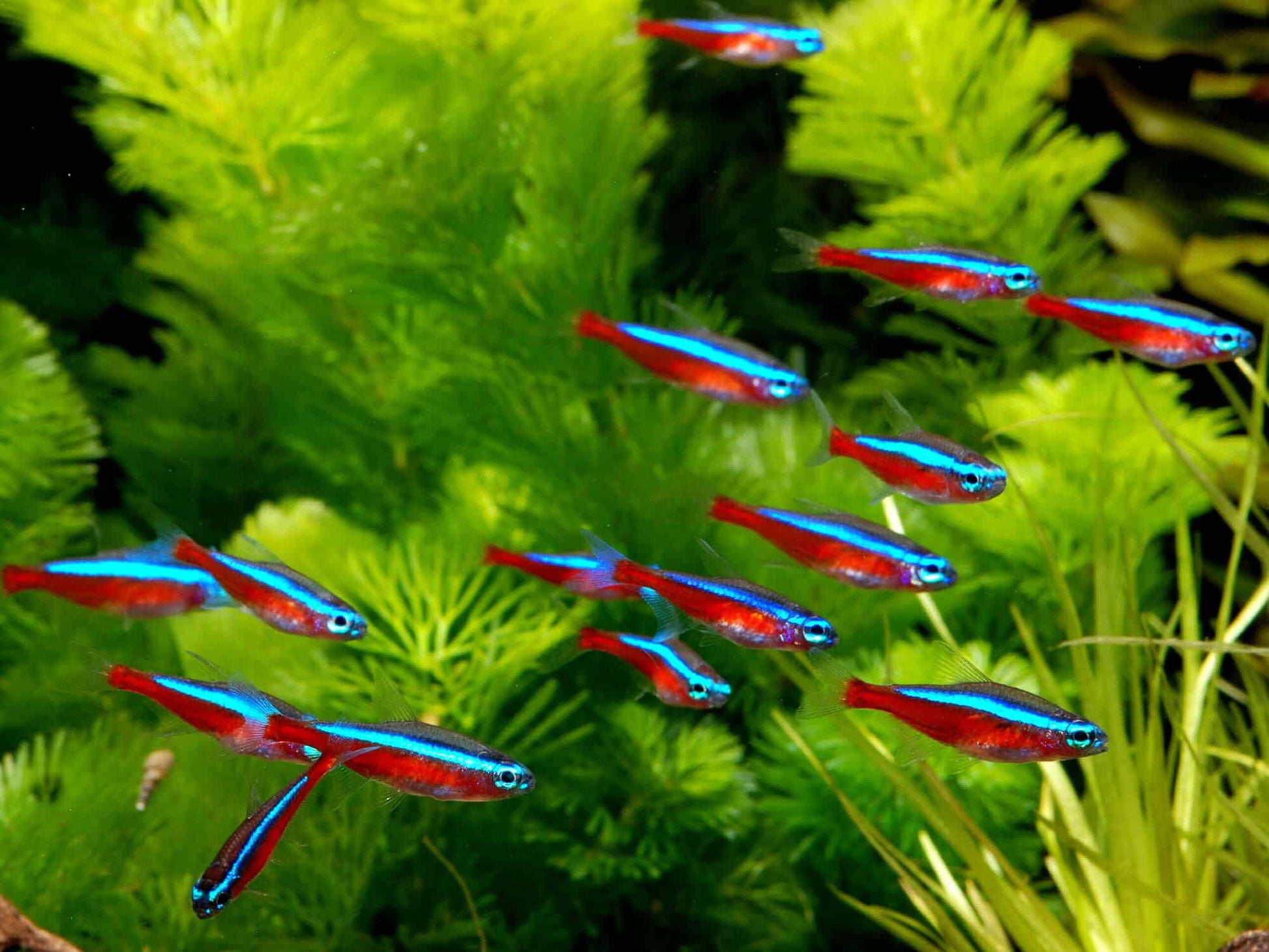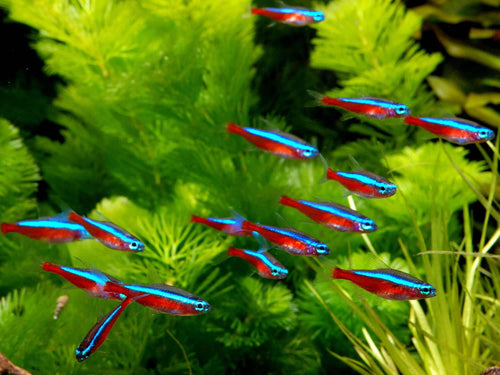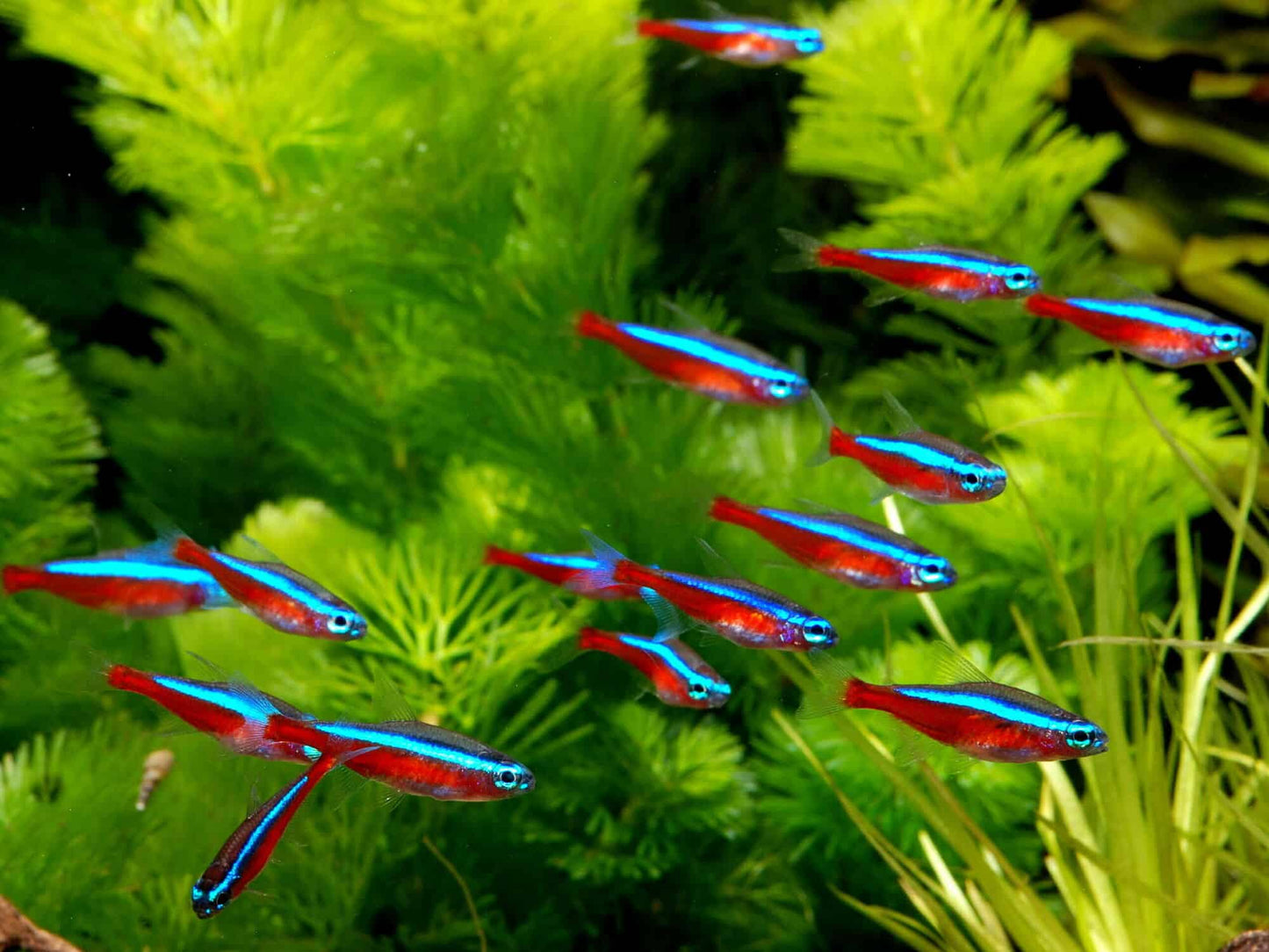| Scientific Name | Paracheirodon axelrodi |
| Common Name(s) | Cardinal Tetra |
| Origin | South America |
| Temperature Range | 22-27° C |
| pH Range | 5.5-7.5 |
| Adult Size | 5cm |
| Diet | Omnivore |
Cardinal Tetra Facts:
- Named Cardinal Tetra because of its vivid red colour
- Has a laterally bisecting iridescent blue line characteristic of the Paracheirodon species
- Often mistaken as Neon Tetra
Species Overview:
The Cardinal Tetra is a freshwater fish native to the various well-vegetated tributaries of the upper Orinoco and Negro rivers in South America. Its average size is 2.5-5cm in length with a lifespan of several years in the wild, but only about a year in captivity. It is named after its vivid red colour and also has an iridescent blue streak laterally bisecting it, a characteristic of the Paracheirodon species.
Among aquarium owners, the Cardinal Tetras are very common, although it was difficult to breed in captivity up until recent years. A fairly easy way to tell if a fish is bred or wild-caught is to check for damaged fins that can be normally found on the wild fish. There is a big production behind the supply of these fish. In Brazil, the locals have started a cardinal fishery where the catching of the highly valued fish has become an entire industry.
Cardinal Tetras are very peaceful and will school together to form brilliant displays of activity and color, a reason why they’re a favorite for aquarium owners. They typically need at least a 37L aquarium that is densely planted, as well as needing areas of low or subdued lighting. They should be kept in groups of six or more and be housed with other peaceful wildlife. They also should be kept in soft, acidic water with very few changes to their water parameters. They are very tough fish and are able to withstand harsher waters, leading many owners to overestimate what they should be accustomed to.
Diet is another strong suit of the Cardinal Tetra, as they have a very wide variety in what they are willing to eat. They will accept small foods such as brine shrimp, freeze-dried bloodworms, and most forms of dry food. They are very sturdy fish and are not picky with their food, causing them to be a fan favorite of all aquarium owners.



